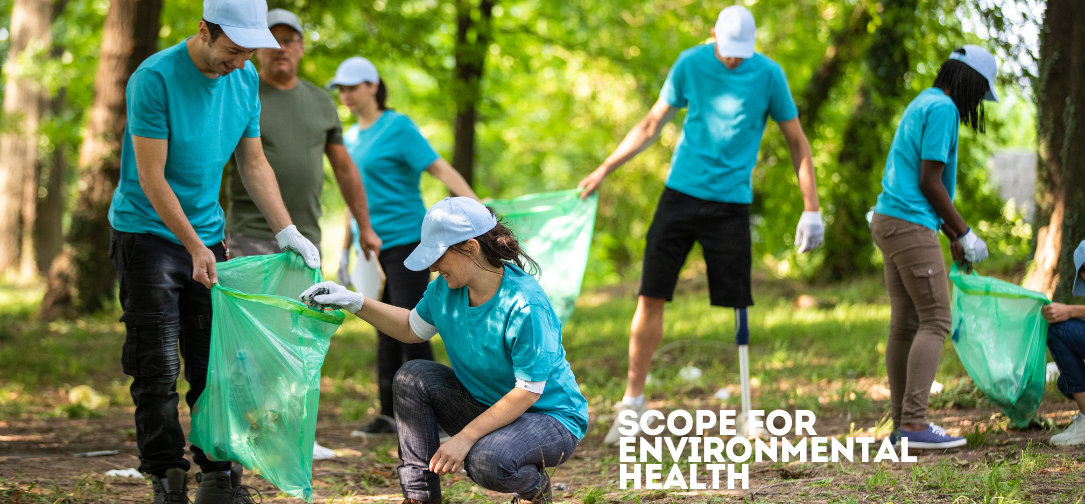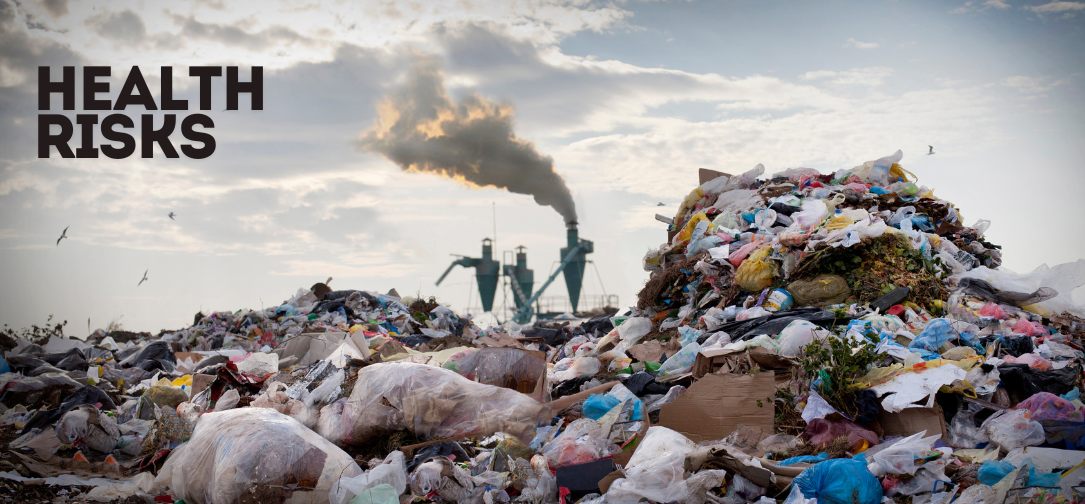Public Health
Environmental Health Risks: How Your Surroundings Affect Your Wellbeing

Environmental health is a critical aspect of public health, focusing on the interplay between the environment and human well-being. Every day, people are exposed to a wide array of environmental factors that can have both short-term and long-term impacts on their health. These factors range from air and water quality to exposure to chemicals and radiation, as well as the physical conditions of the spaces in which we live and work. Understanding these environmental health risks is essential for protecting public health and improving the quality of life. In this documentary-like article, we will explore the different environmental risks that influence human health, their sources, how they affect our well-being, and what steps can be taken to mitigate these risks.
1) The Scope of Environmental Health
Environmental health encompasses all aspects of the natural and built environments that may affect human health. The World Health Organization (WHO) defines it as “the assessment and control of environmental factors that can potentially affect health.” This includes:
- Chemical hazards, such as air pollution, pesticides, and industrial chemicals.
- Physical hazards, like noise pollution, radiation, and extreme temperatures.
- Biological hazards, including viruses, bacteria, and other pathogens.
- Social and economic factors, like access to clean water, food security, housing conditions, and sanitation.
The impacts of these factors can range from minor irritations, like allergies or headaches, to severe health outcomes, such as cancer, respiratory diseases, and even premature death. Vulnerable populations, including children, the elderly, and people with pre-existing health conditions, are often more susceptible to the adverse effects of environmental hazards.
2) Air Pollution: The Invisible Killer
Air pollution is one of the most significant environmental health risks globally. According to the WHO, air pollution is responsible for an estimated 7 million premature deaths annually. It consists of both outdoor and indoor pollution, with sources ranging from vehicle emissions and industrial activities to household cooking and heating.
Outdoor Air Pollution
Outdoor air pollution primarily results from the combustion of fossil fuels in cars, power plants, and factories. Key pollutants include:
- Particulate matter (PM2.5 and PM10): Tiny particles that penetrate deep into the lungs and even enter the bloodstream, causing cardiovascular and respiratory diseases.
- Nitrogen dioxide (NO2): Produced from vehicle emissions and power plants, NO2 can irritate the respiratory system and exacerbate conditions like asthma.
- Ozone (O3): Ground-level ozone, created by chemical reactions between volatile organic compounds (VOCs) and nitrogen oxides under sunlight, is a major component of smog and can cause respiratory problems.
- Sulfur dioxide (SO2): Emitted mainly by coal-burning power plants, SO2 can aggravate lung diseases and contribute to acid rain.
Indoor Air Pollution
Indoor air pollution is a significant health risk, especially in low- and middle-income countries where solid fuels like wood, charcoal, and coal are used for cooking and heating. Inadequate ventilation increases the concentration of pollutants like:
- Carbon monoxide (CO): This colorless, odorless gas is produced by burning fossil fuels and can cause poisoning, leading to symptoms ranging from headaches to death in severe cases.
- Radon: A naturally occurring radioactive gas that can accumulate in homes, radon is the second leading cause of lung cancer after smoking.
- Volatile Organic Compounds (VOCs): Found in household products like paints, cleaning agents, and disinfectants, VOCs can cause respiratory issues, headaches, and other health problems.
Health Impacts:
Prolonged exposure to air pollution can lead to a range of health problems, including:
- Respiratory diseases: Asthma, bronchitis, and chronic obstructive pulmonary disease (COPD) are all exacerbated by air pollution.
- Cardiovascular diseases: Long-term exposure to particulate matter can increase the risk of heart attacks, strokes, and hypertension.
- Cancer: Certain air pollutants, such as benzene and formaldehyde, are known carcinogens.
- Developmental issues: In children, air pollution has been linked to developmental delays, cognitive deficits, and low birth weights.
3) Water Contamination: A Hidden Threat
Access to clean and safe drinking water is fundamental to human health. Yet, water contamination is a pervasive issue, affecting millions of people worldwide. Polluted water can carry harmful microorganisms, heavy metals, and chemicals that pose serious health risks.
Sources of Water Contamination
Water contamination can occur through various pathways:
Agricultural runoff: Pesticides, fertilizers, and animal waste from farms can seep into rivers, lakes, and groundwater, contaminating drinking water supplies with nitrates, phosphates, and pathogens.
Industrial waste: Factories may discharge pollutants, including heavy metals like mercury, lead, and cadmium, into water bodies. These toxins can accumulate in aquatic life and enter the human food chain.
Sewage and wastewater: Inadequate sanitation systems can result in untreated sewage entering water sources, introducing harmful bacteria, viruses, and parasites into the water supply.
Plastic pollution: Microplastics, tiny plastic particles that result from the breakdown of larger plastic waste, have been found in water bodies worldwide. These particles can absorb toxic chemicals and enter the food chain, potentially affecting human health.
Health Impacts:
The health impacts of water contamination are far-reaching and can manifest as:
Waterborne diseases: Pathogens like Escherichia coli (E. coli), Giardia, and Cryptosporidium can cause gastrointestinal infections, diarrhea, cholera, and other illnesses.
Heavy metal poisoning: Chronic exposure to heavy metals like lead and arsenic can result in neurological damage, kidney failure, and an increased risk of cancer.
Endocrine disruption: Certain chemicals found in polluted water, such as phthalates and bisphenol A (BPA), can disrupt hormone systems, leading to reproductive issues and developmental problems in children.
In developing regions, lack of access to clean water and adequate sanitation remains one of the leading causes of illness and death, particularly among children under five years old. Water-related diseases also disproportionately affect poor and marginalized communities in industrialized nations.
4) Hazardous Chemicals and Pesticides: Silent Intruders
The modern world is awash with chemicals. While many of these chemicals have improved our quality of life, they also pose significant risks to human health and the environment when improperly used or disposed of.
Industrial Chemicals
Industrial chemicals are used in everything from manufacturing to cleaning products. Some of the most harmful substances include:
- Asbestos: Once widely used in construction for its fire-resistant properties, asbestos is now known to cause lung cancer, mesothelioma, and asbestosis.
- Polychlorinated biphenyls (PCBs): Although banned in many countries, PCBs were once used in electrical equipment and are still found in older products and polluted environments. They are highly toxic and can cause cancer and immune system suppression.
- Persistent Organic Pollutants (POPs): These chemicals, including DDT and dioxins, persist in the environment for long periods and accumulate in the food chain, leading to reproductive disorders, cancer, and developmental problems.
Pesticides
Pesticides are used to control pests in agriculture, but their widespread use has raised concerns about human health risks. Exposure to pesticides can occur through direct contact, consumption of contaminated food, or water. Some common pesticides include:
- Organochlorines: These pesticides, including DDT, are highly persistent and bioaccumulate in the environment. They have been linked to cancer, reproductive harm, and endocrine disruption.
- Organophosphates: Widely used in modern agriculture, organophosphates can cause acute poisoning, leading to symptoms like headaches, dizziness, and respiratory failure. Long-term exposure has been associated with neurological damage.
Health Impacts:
The health impacts of hazardous chemicals and pesticides are vast, including:
- Cancer: Many chemicals, including benzene, formaldehyde, and certain pesticides, are classified as carcinogens.
- Neurological damage: Exposure to heavy metals like lead and mercury can cause irreversible damage to the brain and nervous system, particularly in children.
- Reproductive harm: Chemicals such as BPA and phthalates can interfere with reproductive hormones, leading to infertility and developmental problems in offspring.
- Endocrine disruption: Chemicals that mimic or block hormones can disrupt the endocrine system, leading to obesity, diabetes, and thyroid disorders.

5) Noise Pollution: The Overlooked Hazard
While noise pollution may not be as immediately harmful as chemical or air pollution, it is a growing environmental health risk. Noise pollution refers to unwanted or harmful sounds that disrupt normal life and cause stress or health problems.
Sources of Noise Pollution
Noise pollution originates from various sources, including:
- Urbanization: Traffic, construction sites, and public transportation contribute significantly to noise in cities.
- Industrial activity: Factories, machinery, and industrial operations can produce high noise levels that affect both workers and nearby communities.
- Airports: Noise from airplanes, especially in areas close to airports, can lead to sleep disturbances and increased stress levels.
Health Impacts:
Chronic exposure to high levels of noise pollution can have a range of health effects:
- Hearing loss: Prolonged exposure to loud noises can damage the hair cells in the inner ear, leading to hearing impairment or permanent hearing loss.
- Cardiovascular problems: Studies have shown that long-term exposure to noise pollution increases the risk of high blood pressure, heart attacks, and strokes.
- Mental health issues: Constant noise can lead to stress, anxiety, and sleep disorders, all of which negatively impact mental health.
- Cognitive impairment in children: Noise pollution has been linked to reduced attention spans, slower cognitive development, and learning difficulties in children.
6) Climate Change and Health
Climate change represents one of the most significant environmental health challenges of the 21st century. Rising global temperatures, extreme weather events, and changing ecosystems all have profound implications for human health.
Impacts of Climate Change on Health
- Heat-related illnesses: Increasing global temperatures result in more frequent and severe heat waves, which can cause heatstroke, dehydration, and exacerbate pre-existing conditions like cardiovascular and respiratory diseases.
- Vector-borne diseases: Changes in temperature and precipitation patterns can expand the habitats of disease vectors like mosquitoes and ticks, leading to the spread of diseases such as malaria, dengue fever, and Lyme disease.
- Food and water security: Climate change affects agricultural productivity and water availability, leading to food and water insecurity, malnutrition, and associated health problems.
- Displacement and mental health: Extreme weather events, such as hurricanes, floods, and wildfires, can lead to the displacement of communities, increasing the risk of mental health disorders such as anxiety, depression, and post-traumatic stress disorder (PTSD).
7) Mitigation and Adaptation: Addressing Environmental Health Risks
While the challenges posed by environmental health risks are significant, there are several strategies that governments, industries, and individuals can adopt to reduce their impact.
Government Regulations and Policies
Governments play a crucial role in regulating and mitigating environmental health risks through:
- Air and water quality standards: Enforcing regulations that limit the emissions of pollutants into the air and water can significantly reduce health risks.
- Banning or restricting harmful chemicals: Prohibiting the use of hazardous substances like asbestos, PCBs, and certain pesticides helps protect public health.
- Climate action: Governments can adopt policies that promote renewable energy, reduce greenhouse gas emissions, and protect vulnerable communities from the effects of climate change.
Industry Innovations
Industries can contribute to reducing environmental health risks by:
- Adopting cleaner technologies: Switching to cleaner production methods, reducing waste, and minimizing emissions can reduce the environmental impact of industrial activities.
- Sustainable agriculture: Implementing integrated pest management (IPM) practices and reducing the use of harmful pesticides can promote sustainable farming while protecting public health.
- Corporate responsibility: Companies should be held accountable for their environmental impact, with strict penalties for pollution and harmful practices.
Individual Actions
Individuals can also play a role in reducing environmental health risks by:
- Reducing air pollution: Using public transportation, carpooling, and adopting energy-efficient practices at home can help reduce air pollution.
- Avoiding harmful chemicals: Choosing natural or eco-friendly products, properly disposing of hazardous materials, and reducing pesticide use in homes and gardens can limit exposure to harmful chemicals.
- Supporting climate action: Reducing energy consumption, supporting renewable energy sources, and advocating for climate policies can help mitigate the health impacts of climate change.
Conclusion
Environmental health risks are pervasive and multifaceted, with significant implications for human well-being. From air and water pollution to hazardous chemicals and noise pollution, our surroundings can profoundly affect our health. Climate change further exacerbates these risks, posing new challenges for public health in the coming decades. However, with concerted efforts at the governmental, industrial, and individual levels, it is possible to mitigate these risks and create healthier environments for all. By recognizing the connection between our environment and our health, we can take meaningful steps to protect ourselves and future generations.
-

 Home and Garden6 days ago
Home and Garden6 days agoTransform Your Space: A Guide to Minimalist House Interior Design in 2025
-

 Home & Family7 days ago
Home & Family7 days ago10 Essential Cleaning Hacks for Bathroom Surfaces You Need to Try
-

 Health & Fitness7 days ago
Health & Fitness7 days agoDiscovering the Best Multivitamin for Women Over 40: Essential Nutrients for Optimal Health
-

 Automotive5 days ago
Automotive5 days agoUnlocking Performance: Why the HP Spectre x360 is the Ultimate 2-in-1 Laptop for 2025
-

 Health & Fitness6 days ago
Health & Fitness6 days agoDiscover the Best Multivitamin for Women Over 40: A Comprehensive Guide to Optimal Health
-

 Crime7 days ago
Crime7 days agoExploring the Most Anticipated New True Crime Documentaries of 2025
-

 Business7 days ago
Business7 days agoMaximize Your Earnings with American Express High Yield Savings Accounts in 2025
-

 Education6 days ago
Education6 days agoUnlock Your Potential: Discover the Best Udemy Free Courses of 2025






















